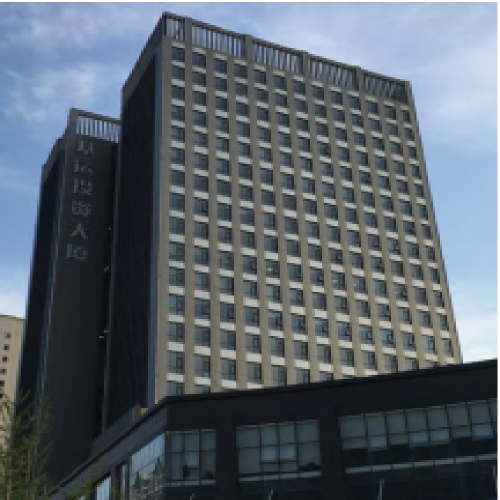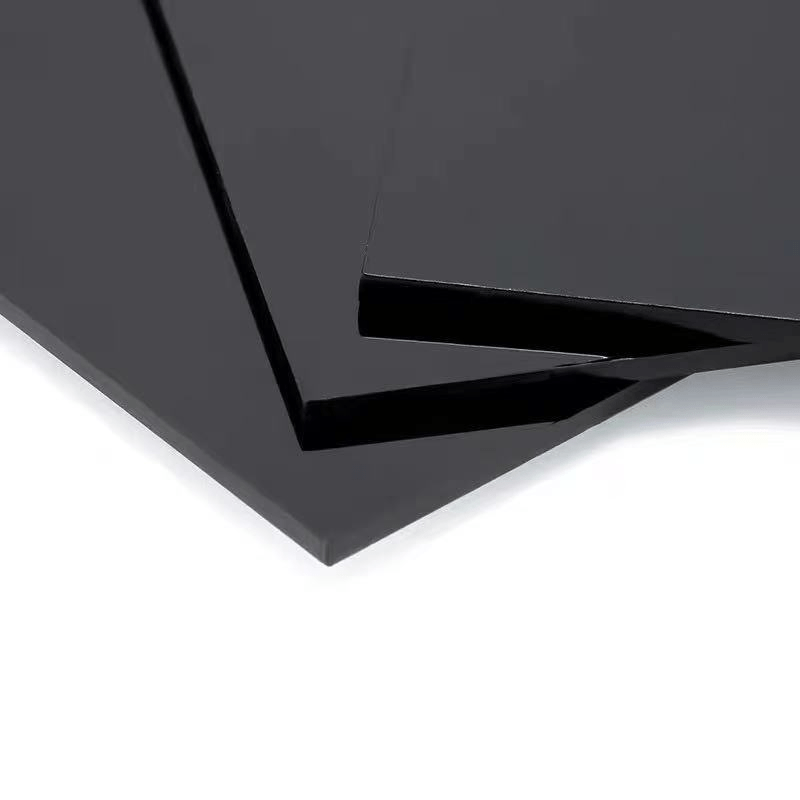Reducing Heat Transfer with Infrared Reflection
Glass with special coatings works by bouncing back infrared light, which cuts down on heat moving through the window. This means rooms stay at more stable temperatures without needing so much heating or air conditioning. When sunlight hits these windows, instead of letting all that warmth inside, the coating sends most of it right back out. That keeps spaces cool when it's hot outside and retains warmth during colder months. Research from the Journal of Building Physics found that some coated glass actually reflects about 95 percent of those pesky infrared rays. The result? Buildings consume less energy for climate control while occupants enjoy better comfort levels throughout different seasons.
Lowering HVAC Consumption in Buildings
Energy efficient coated glass makes a real difference when it comes to cutting down on HVAC usage, something that accounts for around 40% of all energy spent in buildings. Commercial spaces that install low emissivity or Low-E glass tend to see their cooling needs drop significantly. Some studies indicate buildings with Low-E glass save between 20 to 30 percent on their energy bills, which adds up nicely over years of operation. Building regulations have been pushing harder for green materials lately, making compliance easier while boosting sustainability efforts across construction. Since coated glass fits right into these new standards, many developers and architects find themselves gravitating toward this solution whenever they want to cut energy costs without sacrificing comfort.
Lifecycle Carbon Emission Reductions
Coated glass makes a real difference when it comes to cutting down carbon emissions over time, mostly because it cuts back on how much energy buildings need while they're running day to day. Studies looking at the whole life cycle of buildings show that those with good quality energy efficient coatings can slash their operating carbon footprint by around half during their entire lifespan according to recent research findings. These kinds of savings fit right into what many countries are trying to accomplish with their green building targets aimed at reducing harmful gases in the atmosphere and fighting off climate change effects. When architects choose to install coated glass, they're doing more than just meeting environmental targets though. It actually helps establish better building habits across the industry where protecting our planet becomes a top priority alongside other construction considerations.
Technological Innovations in Sustainable Glass Coatings
Liquid Glass Coating Advancements
Liquid glass coatings are changing how we think about sustainable glass technology. What makes them special is their ultra thin nature that still offers strong protection against damage. Standard glass surfaces get a real boost from these coatings thanks to features such as anti fogging effects and better resistance against UV damage plus scratches. Some newer versions even come with self cleaning abilities which cuts down on maintenance expenses for property managers since there's less need for people to clean windows manually. Architects and designers find these coatings particularly useful when trying to keep buildings looking good while meeting strict performance requirements across various construction projects.
Smart Glass Integration for Dynamic Performance
Smart glass tech is changing how we think about comfort and green building practices these days. With just a simple touch or voice command, this innovative material lets buildings adjust their lighting, temperature control, and privacy levels on demand. When connected to internet of things gadgets, smart glass actually helps manage energy usage in real time, which means better overall building performance and lower power bills for property owners. Some studies suggest commercial buildings could save around 30% on their energy costs with this stuff, though actual results probably depend on location and usage patterns. What really sets smart glass apart is how easily it switches spaces between transparent and opaque states. That feature alone explains why architects love incorporating it into everything from office towers to luxury homes where clients want both privacy and those great city views when they need them.
Durable Pyrolytic Coatings for Longevity
During glass production, manufacturers apply pyrolytic coatings which create a really tough and lasting surface finish. These special coatings stand up well against tough weather conditions and other environmental stresses, so they tend to stay in good condition for many years. Some tests show these coatings can stick around for more than three decades, which makes them great choices for buildings of all types, whether commercial spaces or homes. The fact that they last so long helps maintain the building's structure while cutting down on repair bills over time. For architects looking at sustainability factors, this kind of coating represents a smart choice that pays off in the long run without constant replacements.
Shading Low-E Coated Glass: A Sustainable Solution
Features of SC60/SC70 Glass Technology
The SC60/SC70 glass tech marks real progress in window shading options, combining good looks with better energy performance. What makes this glass stand out is how it keeps things looking nice while actually saving power too. The way it handles sunlight is pretty smart too. It lets enough daylight come through so spaces don't feel dark, but stops too much heat from getting inside during hot weather. According to industry tests, structures fitted with these glasses often hit U-values around 0.20 or lower. That means building owners spend less money on air conditioning since the glass does most of the work already. For anyone concerned about both appearance and utility in their construction projects, this seems like a solid choice worth considering.

Balancing Light Transmission and Heat Control
Designing glass for buildings presents a real problem when trying to let enough daylight in without letting too much heat follow. The solution often comes down to Low-E coatings, those special treatments that basically let the nice visible light through but bounce back most of the infrared and UV stuff we don't want. What makes these coatings so useful? They help keep spaces comfortable inside while saving money on cooling costs at the same time. Studies looking at how well different glasses manage light versus heat have found something interesting lately. People seem happier in their workplaces or homes with better natural lighting, and they end up turning on fewer lights during the day. This means less electricity usage overall, which creates a more environmentally friendly building atmosphere without sacrificing comfort.
Neutral Aesthetics Meets High CRI Performance
Coated glass options these days manage to bring together good Color Rendering Index (CRI) performance along with a neutral look that really makes interiors stand out visually. Architects love how the neutral appearance blends right into buildings without standing out too much, which is something property developers appreciate when they want their projects to look cohesive from every angle. Glass with high CRI ratings actually transforms office environments quite a bit. People tend to work better in spaces where colors look real and lively instead of washed out or distorted. Some studies even suggest that proper lighting through quality glass can boost employee morale and efficiency over time.
Case Studies: Coated Glass in Green Construction
Commercial High-Rise Energy Savings
Tall buildings are starting to use coated glass more often because it helps save energy, and the difference is pretty impressive. Take the Bullitt Center in Seattle for example they found out that their building used about half as much energy for heating and cooling after installing this special glass. The money saved on running costs matters a lot, sure, but there's another benefit too fewer emissions from the building itself means better air quality for everyone nearby. What we're seeing now is cities getting inspired to try similar approaches across their infrastructure. Coated glass isn't just some fancy feature anymore it actually makes a real difference in turning ordinary office towers into something that works better with nature rather than against it. And given how many new developments are happening globally right now, finding ways to make these changes makes perfect sense for both business owners and communities alike.
Residential Retrofit Success Stories
Putting Low-E coated glass windows into older homes really pays off when it comes to saving energy. People who swapped out their old windows for these newer versions often see their monthly bills drop around 25% or so. But there's more than just money saved here too many folks mention feeling more comfortable inside their houses during extreme weather conditions, plus their homes tend to fetch better prices on the market. What makes this work so well is how the special coating on the glass actually traps heat where it belongs either keeping warmth in during winter months or blocking excess sun heat in summer. We're seeing越来越多 homeowners look at window upgrades not just as maintenance items anymore but as smart investments toward building a home that's friendlier to both wallets and the environment over time.
Automotive-to-Architecture Tech Transfer
Over the past few years, tech breakthroughs originally developed for cars, such as laminated glass technology, have found their way into building design. When industries share their innovations, buildings become stronger and safer too. Think about how this helps structures withstand harsh weather conditions or everyday wear and tear. Architects are now drawing inspiration from car designs to completely rethink how buildings look and function. We're seeing all sorts of creative approaches that save energy while looking great at the same time. The real world application? Buildings that stand out aesthetically but also perform better in terms of energy consumption. This kind of collaboration between different sectors is pushing forward more sustainable ways of constructing our cities and homes.
Circular Economy and Future Trends
Recycling Challenges for Coated Glass
The recycling of coated glass comes with some real headaches because of those tricky coatings and sticky adhesives manufacturers put on it during production. These materials just don't play nice in standard recycling operations, which means we need better ways to deal with all this construction debris ending up at demolition sites. Landfills are already packed full of stuff like this, so finding smarter recycling solutions isn't just helpful it's absolutely necessary if we want to cut down on environmental damage. Some pretty interesting research is happening right now about new recycling approaches that could actually recover more materials from these wastes than ever before. And let's face it, since more buildings keep getting built with coated glass every year, figuring out how to recycle it properly will become increasingly important for anyone trying to build a truly circular economy where nothing goes to waste.
Emerging Bio-Based Coating Materials
Bio-based coating materials are becoming really popular among manufacturers looking for greener options across various sectors like automotive and construction. Made from plant or animal sources, these coatings offer comparable strength and wear resistance to conventional petroleum-based products while being much better for the environment. Many of them already meet requirements for LEED certification and other green building standards that are now mandatory in many urban areas. When builders specify these coatings, they not only boost their project's environmental credentials but also appeal to clients who want to showcase their commitment to sustainability. Although still emerging, this shift toward bio-based solutions might gradually change how we think about material selection in construction, pushing the entire industry slowly but surely toward more responsible practices.
Regulatory Push for Net-Zero Glazing
More and more governments around the world are now pushing for buildings to hit net-zero energy targets, which has created a big market for smart window solutions. The rules basically want buildings to be as efficient as possible from roof to foundation, so architects are turning to high tech glass coatings that pass strict performance tests. Looking ahead, buildings will likely incorporate multiple systems working together to cut down on energy waste. Take net-zero glazing for instance it's becoming a key component in modern designs because it helps slash carbon emissions while making cities greener overall. These regulations aren't just changing what gets built they're actually shaping how manufacturers design their products, putting energy saving coatings right at the heart of what builders need for tomorrow's structures.
